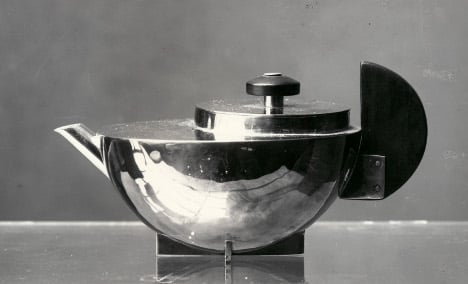Germany is renowned for great design: from Bauhaus to Dieter Rams’ work for Braun, it has helped shape the country both economically and visually. So it’s perhaps surprising that there is no central museum to showcase one of Germany’s most impressive export industries.
But the National German Design Council has started a campaign to rectify the omission. A foundation has been formed, plans are being drawn up and a somewhat controversial proposal has been made. They want to see a future German Design Museum right in the heart of Berlin. And they want it on the same spot where the the city’s destroyed royal palace is supposed to be built on the centrally located Schlossplatz.
The privately owned Vitra Design museum in Baden-Württemberg currently hosts temporary exhibitions, while regional applied arts museums cover parts of German design, but there is nothing comprehensive. The proposed museum would serve as a central hub for all things representing quintessentially Teutonic design.
The Design Council, founded in 1953, has around 170 members whose expertise cover a wide variety of fields ranging from design itself, to economics. From it, the German Design Museum Foundation was created as a platform for experts in design to collect and discuss ideas for the new museum.
Several prominent figures from Germany’s creative scene are already on the foundation board. And in the spring there will be a symposium to discuss a more concrete plan, as the project is still in the brainstorming stage.
The editor in chief of arts magazine “Monopol”, Holger Liebs, has made an impassioned plea on the foundation website, calling for a centre that “will exhibit design as a whole, not just pieces that have already gained international fame.”
Berlin-based artist and author Rafael Horzon added to the debate. “Up until now, design whether it is blueprints, sketches or models, hasn’t been paid much attention in the museum world,” he said recently.
“However, it plays a part in every level of society,” he said. “From the cars that we drive daily and the tables and chairs we sit at, to the televisions and computers that we look at every day.”
He also outlined his belief in the power of good design to change society, something, he feels, art fails to do. “It is not art that belongs in a museum, it is design,” he claimed.
It was Horzon who initially floated the idea of the museum being built on Schlossplatz in Berlin, instead of the controversial city’s palace which he feels “no-one really wants.”
Horzon has also been working on ideas for the appearance of the museum since July, his current one being a glass sphere 500 metres in diameter.
“Obviously the museum would display the legacy and importance of German design throughout history,” Horzon said.
“However it should demonstrate contemporary talent as well, and move away from the preconception that design is just raw steel furniture and sketches of cups.”
DPA/The Local/jcw



 Please whitelist us to continue reading.
Please whitelist us to continue reading.
Member comments